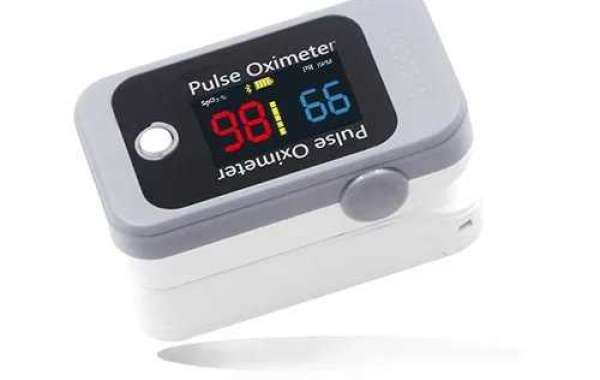1. Introduction of pulse oximeter
3. Applicable scenarios of pulse oximeter
4. Analysis of common problems in the use of pulse oximeter
5. Pulse oximeter supplier - Berry
6. Pulse oximeter related news recommendation
1. Introduction of pulse oximeter
A pulse oximeter is a non-invasive and painless device that measures the level of oxygen in our blood. The oximeter is used to monitor the peripheral blood oxygen concentration, which plays a monitoring role and monitors the changes of the condition.
Such as patients with severe pneumonia or chronic obstructive pulmonary disease, patients with recurrent respiratory failure at ordinary times can choose monitoring. Including some sleep apnea, patients treated with ventilator, monitoring with oximeter are all good methods.
Pulse oximeters provide a non-invasive way to measure blood oxygen saturation or arterial hemoglobin saturation. Arterial pulsation can also be detected, so the patient's heart rate can also be calculated and informed. It is a medical device that measures the oxygen content of a patient's arterial blood.
2. Types of pulse oximeters
2.1 Finger pulse oximeter
2.1.1 Finger Pulse Oximeter With Bluetooth BM1000
Detectable values: blood oxygen, pulse rate, heart rate
Features: buzzer sound, bluetooth link, APP view data, heartbeat waveform display, display battery
Appearance: Gray/Orange OLED Display
Certificate: CE/ISO/FDA
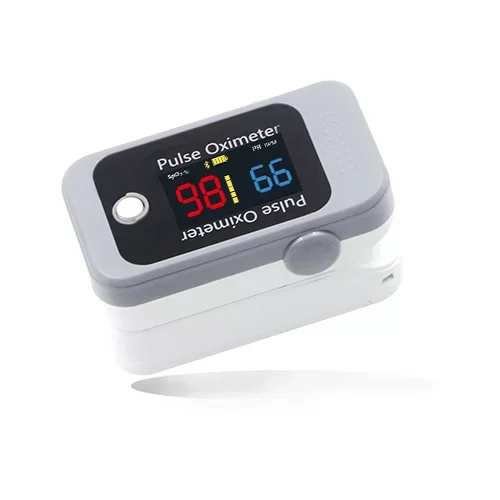
2.1.2 Finger Pulse Oximeter With Bluetooth BM1000B
Detectable values: blood oxygen, pulse rate, heart rate, hypoperfusion index
Features: buzzer sound, bluetooth link, APP view data, heartbeat waveform display, display battery
Appearance: black and white, TFT/LCD display
Certificate: CE/ISO/FDA
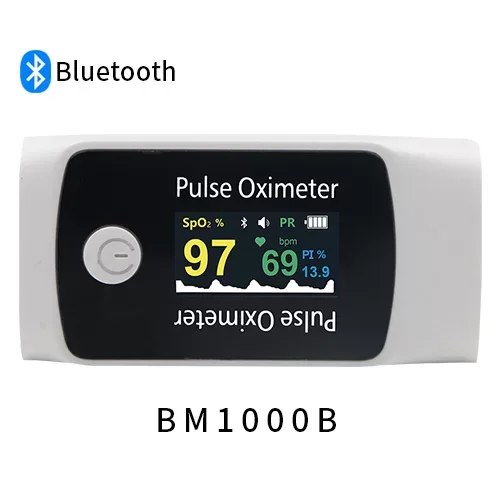
2.1.3 Finger Pulse Oximeter With Bluetooth BM1000C
Detectable values: blood oxygen, pulse rate,
Features: Bluetooth link, APP view data, display power
Appearance: Gray/Orange, TFT/LCD display
Certificate: CE/FDA

2.1.4 Finger Pulse Oximeter With No Bluetooth BM1000D
Detectable values: blood oxygen, pulse rate, heart rate, hypoperfusion index
Features: display power, buzzer sound, heartbeat waveform display
Appearance: Gray/Orange, OLED display
Certificate: CE/ISO
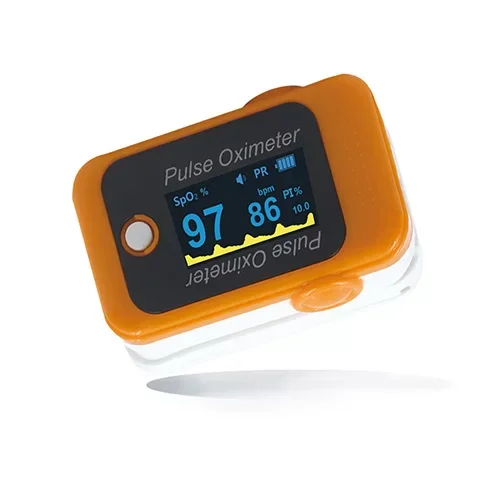
2.1.5 Finger Pulse Oximeter With No Bluetooth BM1000E
Detectable values: blood oxygen, pulse rate,
Features: The numbers are slightly larger
Appearance: black, LED display
Certificate: CE
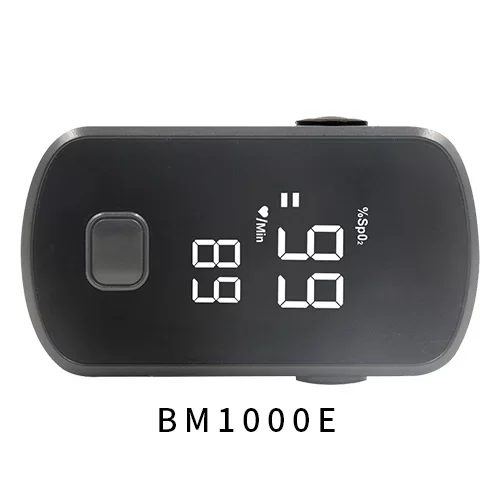
2.2 Handheld pulse oximeter
2.2.1 Handheld Pulse Oximeter With Bluetooth BM1000A
Detectable values: blood oxygen, pulse rate, heart rate, hypoperfusion index
Features: buzzer sound, bluetooth link, APP view data, heartbeat waveform display, display power, palm size, with three blood oxygen probes (baby, child, adult), screen brightness can be set, low battery mode
Appearance: White, LCD display
Certificate: CE/ISO/FDA
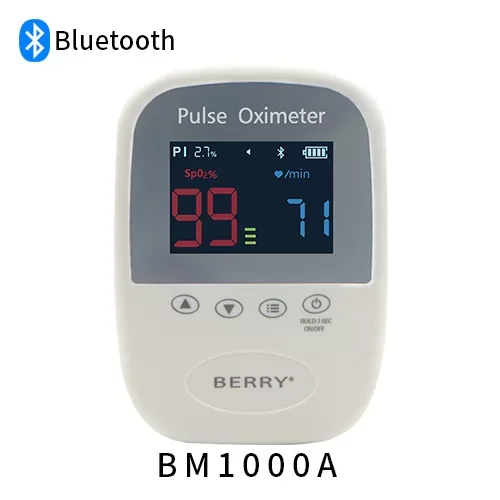
2.3 Wrist pulse oximeter
2.3.1 Wrist Pulse Oximeter With Bluetooth BM2000D
Detectable values: blood oxygen, pulse rate, heart rate, hypoperfusion index
Features: Bluetooth link, APP view data, heartbeat waveform display, display power
Appearance: Blue and black color OLED display
Certificate: CE/ISO
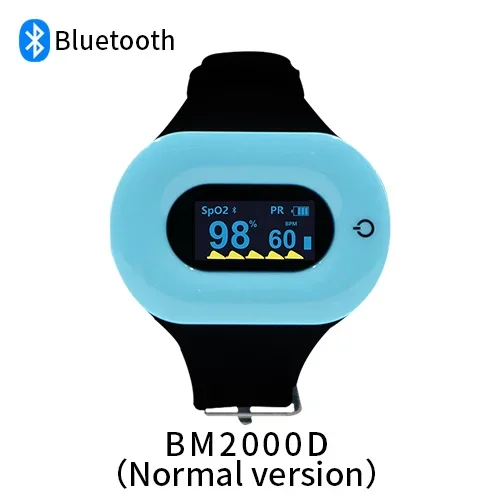
3. Applicable scenarios of pulse oximeter
Applicable scenarios of all blood oxygen detection products: physical signs detection before and after surgery / elderly groups such as hypertension and hyperglycemia / hospital clinical testing / taking anti-stress drugs, anti-asthmatic drugs, anti-depressants, anti-fungal drugs and antibiotics before and after / exercise Before and after/daily health checks.
4. Analysis of common problems in the use of pulse oximeter
Safety requirements for pulse oximeter use
1. Do not share with MRI or CT equipment.
2. Explosion hazard: Do not use the pulse oximeter in the environment of flammable anesthetic gas.
3. The oximeter only plays an auxiliary role in the diagnosis of patients. Please ask the doctor to make a diagnosis based on clinical manifestations and symptoms.
4. Always check the pulse oximeter sensor test point to confirm that the skin of the patient at the sensor test point is intact and the circulation is in good condition.
5. The sensor of the pulse oximeter is not suitable for contact with the adhesive tape, which may lead to wrong measurement data or mistakenly believe that the skin under test has blisters.
6. Please read this manual carefully before use.
7. Periodically replace the test points when using for a long time or according to the different conditions of the patient. Every 4 hours for a maximum time the test point must be changed and the integrity of the patient's skin checked for circulation and correct adjustments made.
8. Autoclaving, vinyl oxide sanitizer, or immersing the sensor in liquid sanitizer can cause erroneous readings.
9. Dysfunction of important indicators of hemoglobin (such as carboxyhemoglobin or methemoglobin) can cause erroneous readings.
10. Excessive intravascular stains, such as indocyanine green or subblue, can cause false readings.
11. The measurement method of blood oxygen saturation will be affected by the strong light of the surrounding environment. Add a protective housing to the sensor if necessary (e.g. wipe with disinfectant or direct sunlight).
12. Unintended patient movements can cause erroneous readings.
13. The interference of medical high-frequency signals will cause erroneous readings.
14. The rhythmic beating of the veins can cause false readings.
15. The measurement position of the sensor in the same artery or the same blood vessel as the blood pressure shaft can cause erroneous readings.
16. Patients with low blood pressure, severely low systolic blood pressure, severe anemia, or hypothermia can cause false readings.
17. False readings can be caused by the patient using inotropes after the heart has stopped beating or when the patient is shaking.
18. Shiny or varnished nails can cause false readings.
From medical analysis, the oxygen content in the blood is greater than or equal to 95, which is a normal indicator; the pulse per minute is between 60-100 times, which is a normal indicator. If the values you have detected do not meet the above two indicators, please test 2-3 times at different time points, and maintain continuous testing for 2-3 days. If the values still do not meet the standards, it is recommended that you go to the hospital for detailed treatment.
Pulse oximeter is an instrument for non-invasive continuous monitoring of human arterial blood saturation parameters, which is widely used in various clinical situations. Blood oxygen saturation is a very important basic parameter in clinical practice, which reflects the information of human blood oxygen content. Too low blood oxygen saturation often leads to irreversible hypoxic damage to human tissues, so monitoring blood oxygen saturation with pulse oximeter is very important in many clinical situations.
5. Pulse oximeter supplier - Berry
Shanghai Berry Electronic Technology Co., Ltd. pays attention to electronic medical equipment products quality and has strict standard on RD, production and quality control. We have many global advanced testing instruments like multi parameter test instrument, noninvasive blood pressure simulator, oxygen simulator saturation and other testing equipment. And we do testing strictly according to the standard. Looking forward to your visit!
6. Pulse oximeter related news recommendation
Finger Pulse Oximeter Product Functions And Features
How To Choose a Good Portable Pulse Oximeter?
